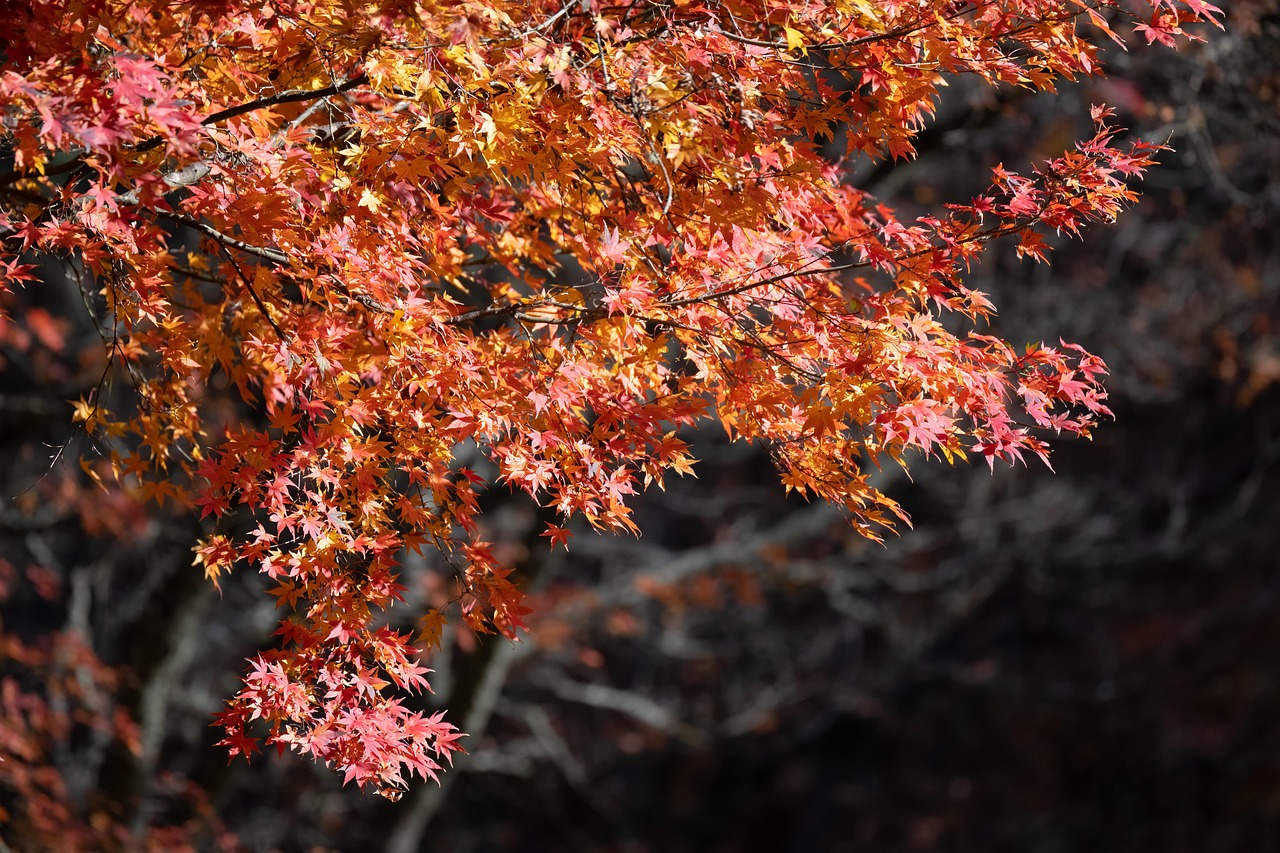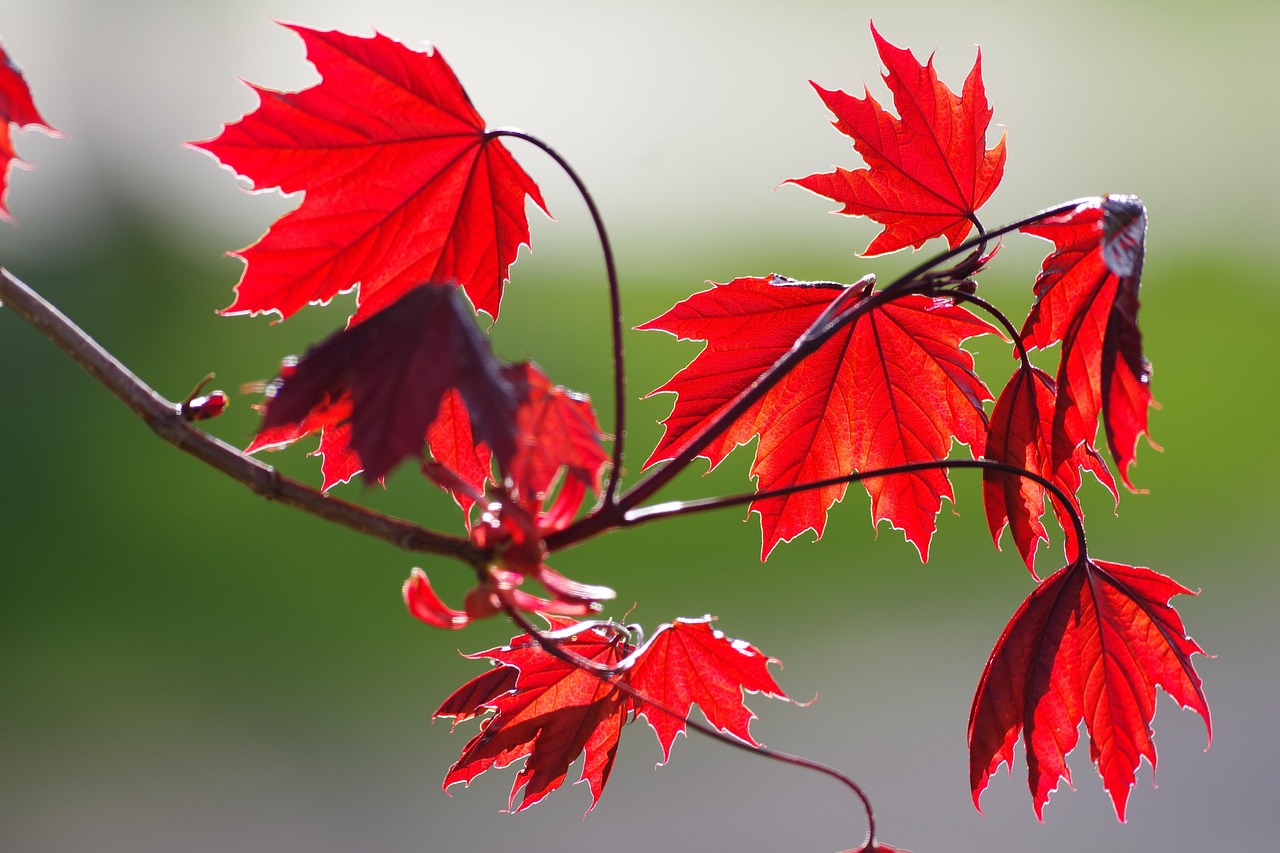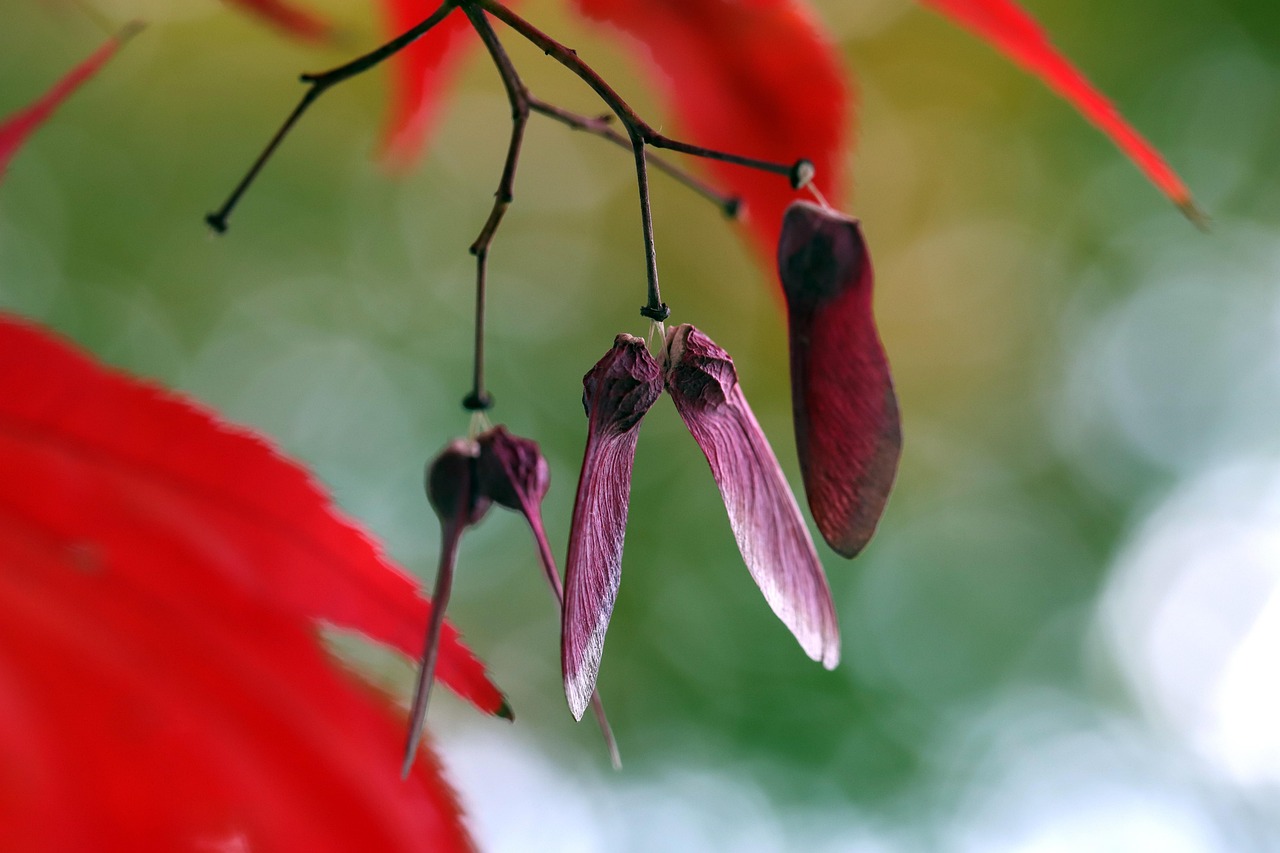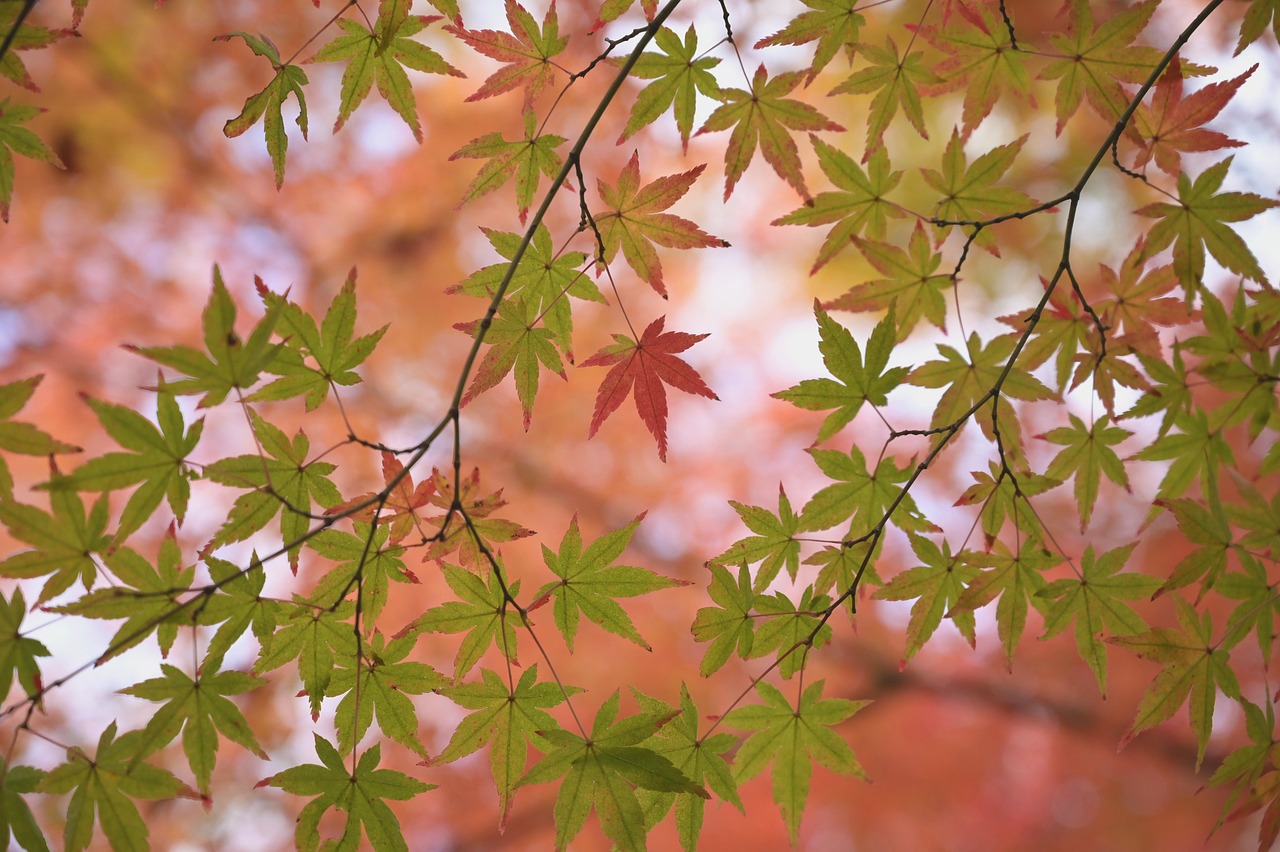Red Maple trees can be considered somewhat messy due to their tendency to drop leaves, seeds, and twigs. However, the level of messiness often depends on the tree’s environment and local conditions. Regular maintenance can mitigate some of these issues.
Understanding Red Maple Trees

Red Maple trees (Acer rubrum) are native to North America and are popular for their stunning fall foliage. They are known for their vibrant red leaves in autumn, which attract homeowners and landscapers alike. These trees can grow rapidly, reaching heights of 40 to 60 feet with a spread of 25 to 40 feet. Their adaptability to various soil types and conditions makes them a common choice in many landscapes.
While Red Maples are admired for their beauty, potential owners must consider their maintenance needs. This includes understanding the messiness associated with these trees. The messiness can be influenced by several factors, including the tree’s age, health, and the local climate. In this section, we will explore these aspects in detail.
Potential Messiness Factors
Several factors contribute to the messiness of Red Maple trees. Understanding these can help in managing expectations for maintenance and cleanliness.
- Leaf Drop: In the fall, Red Maples shed their leaves. This can lead to a significant amount of leaf litter on the ground.
- Seed Production: These trees produce small, winged seeds known as samaras. They typically fall in spring and can create a mess on lawns and walkways.
- Twigs and Branches: During storms or high winds, twigs and small branches may break off and fall to the ground.
- Pests and Diseases: Infestations or diseases may cause additional debris, such as dead leaves or branches.
Leaf Drop and Its Impact
The most noticeable aspect of messiness in Red Maple trees is their leaf drop. Each autumn, these trees transform into vibrant shades of red and yellow before shedding their leaves. While this seasonal change is beautiful, it also means that property owners will have to deal with a substantial amount of fallen leaves.
It is essential to consider the timing of leaf drop. In many regions, Red Maples begin losing leaves in late October, continuing into November. This period coincides with other trees shedding their foliage, potentially leading to an overwhelming amount of leaves to clean up.
Samaras: The Seeds of Red Maples
Another maintenance consideration is the production of samaras. These seeds are typically produced in large quantities during the spring. Each samara has a wing that allows it to be dispersed by the wind. While this process is natural for the tree’s reproduction, it can lead to a cluttered yard as they accumulate on the ground.
The samaras are not only messy but can also sprout if not cleared away promptly. This can lead to unwanted seedlings popping up throughout your garden or lawn. Regularly raking or mowing can help manage this aspect effectively.
Other Debris from Red Maples
Beyond leaves and seeds, Red Maple trees can also shed small twigs and branches, particularly during inclement weather. High winds or heavy snow can cause breakage, adding to the debris that homeowners must contend with. While this is not a year-round issue, it can require extra attention during storm seasons.
Pest infestations can further complicate maintenance. Certain insects may target Red Maples, causing damage that results in additional leaf drop or branch dieback. Keeping an eye out for signs of pests is crucial for maintaining tree health and minimizing mess.
Maintenance Strategies
Despite the potential messiness associated with Red Maple trees, there are effective maintenance strategies that can help manage these issues. Regular care can significantly reduce the impact of fallen leaves, seeds, and other debris.
- Regular Raking: Schedule raking sessions during fall to keep your yard tidy.
- Mowing: Mowing over fallen samaras can help break them down and return nutrients to the soil.
- Tree Health Monitoring: Regularly inspect your tree for signs of pests or disease. Prompt action can prevent further complications.
- Pruning: Prune branches to maintain a healthy shape and reduce wind resistance.
Implementing these strategies can make owning a Red Maple tree less messy and more enjoyable. With proper care, you can appreciate its beauty while minimizing maintenance efforts.
Environmental Considerations
The environment in which a Red Maple tree is planted can greatly influence its messiness and maintenance needs. Understanding these environmental factors is crucial for managing the tree effectively. Here are some considerations to keep in mind.
Soil Type and Drainage
Red Maples thrive in a variety of soil types but prefer moist, well-drained soils. Poor drainage can lead to root problems, which may affect tree health. A healthy tree is less likely to experience issues that contribute to messiness, such as twig drop or leaf dieback. It is advisable to conduct a soil test before planting to ensure it meets the needs of the tree.
Sunlight Requirements
Red Maple trees enjoy full sun to partial shade. They typically require at least four hours of direct sunlight each day. Trees planted in shaded areas may grow weaker and more susceptible to pests and diseases, leading to increased debris. Proper sunlight exposure promotes healthy growth, reducing overall maintenance issues.
Climate Factors
The local climate also plays a significant role in the maintenance of Red Maples. These trees are adaptable but thrive best in temperate climates. Extreme weather conditions, such as heavy winds or prolonged droughts, can lead to increased stress on the tree. This stress can manifest as additional leaf drop or twig breakage.
- Wind Exposure: Trees planted in open areas may be more exposed to wind damage. It is wise to choose a location that offers some protection from harsh winds.
- Drought Conditions: If you live in an area with limited rainfall, regular watering may be necessary to keep the tree healthy and reduce its susceptibility to damage.
- Temperature Extremes: In regions with extreme temperature fluctuations, trees might shed leaves prematurely as a stress response.
Pest and Disease Management

Maintaining the health of your Red Maple is essential for minimizing messiness. Pests and diseases can weaken the tree, leading to increased debris on the ground. Understanding common threats can help you take proactive measures.
Common Pests
Red Maples are susceptible to various pests that can cause damage. Some common pests include:
- Aphids: These small insects feed on the sap and can cause leaf curling and drop.
- Scale Insects: Scale can weaken the tree by sucking sap and may lead to sooty mold growth on leaves.
- Spider Mites: These tiny pests can cause discoloration and leaf drop. They thrive in dry conditions, making regular watering essential.
Disease Concerns
In addition to pests, Red Maples can be affected by diseases that may lead to messy conditions:
- Verticillium Wilt: This soil-borne fungus causes leaves to wilt and drop prematurely.
- Leaf Spot: Fungal infections can create spots on leaves, leading to premature leaf drop.
- Canker Diseases: These cankers can weaken branches and cause them to die back, leading to more debris on the ground.
Preventive Measures
To minimize the risk of pests and diseases, consider these preventive measures:
- Regular Inspections: Monitor your tree for any signs of pests or diseases. Early detection can lead to more effective treatment.
- Proper Watering: Ensure your Red Maple receives adequate water, especially during dry spells. This keeps the tree healthy and resilient.
- Pesticide Use: If pests are detected, use appropriate pesticides according to local guidelines. Organic options are available for environmentally friendly choices.
Irrigation Practices
Irrigation is an important aspect of maintaining healthy Red Maple trees. Proper watering practices not only support growth but also help mitigate issues that contribute to messiness.
Watering Frequency
The frequency of watering depends on various factors such as soil type, weather conditions, and the age of the tree. Newly planted Red Maples require more frequent watering as they establish their root systems. As the tree matures, watering can be reduced but should still be monitored during dry spells.
Irrigation Methods
There are several methods for watering Red Maples:
- Drip Irrigation: This method delivers water directly to the roots and minimizes evaporation.
- Soaker Hoses: Soaker hoses provide a slow, steady supply of water to the soil, promoting deep root growth.
- Hand Watering: For smaller trees or specific areas, hand watering can be effective in ensuring thorough moisture distribution.
Ensuring that your Red Maple is well-watered will lead to healthier foliage and reduce the likelihood of leaf drop or other messy conditions associated with stressed trees.

Seasonal Maintenance Tasks
Maintaining a Red Maple tree requires attention throughout the year. Different seasons bring unique challenges and tasks that can help minimize messiness while promoting the overall health of the tree. Here is a breakdown of essential seasonal maintenance activities.
Spring Maintenance
Spring is a critical time for Red Maple trees, as they begin to grow actively. During this season, several maintenance tasks should be prioritized:
- Inspect for Pests: As the weather warms, pests such as aphids and spider mites become more active. Regularly inspect the leaves and branches for signs of infestations.
- Pruning: Light pruning can be done in early spring before new growth starts. Remove dead or damaged branches to promote healthy growth.
- Fertilizing: Applying a balanced fertilizer can support new growth. Choose a slow-release fertilizer designed for trees to ensure nutrients are available throughout the growing season.
- Mulching: Adding a layer of mulch around the base of the tree helps retain moisture, suppress weeds, and maintain a consistent soil temperature.
Summer Maintenance
In summer, the primary focus shifts to hydration and monitoring tree health.
- Irrigation: Ensure that your Red Maple receives adequate water during hot summer months. Deep watering every week or two is vital, especially during dry spells.
- Pest Control: Continue monitoring for pests. If infestations are detected, apply appropriate treatments promptly to prevent damage.
- Weed Control: Keep the area around the tree free from weeds, as they compete for nutrients and water. Hand-pulling or using mulch can help manage weeds effectively.
Fall Maintenance
Fall is often the most visually striking time for Red Maples, but it also presents specific maintenance needs.
- Leaf Cleanup: As leaves begin to fall, regular raking is essential to keep your yard tidy. This will help prevent mold growth and other issues associated with decomposing leaves.
- Final Watering: Before winter sets in, give your tree one last deep watering to ensure it has enough moisture stored for the colder months.
- Assess Tree Health: Inspect your tree for any signs of disease or damage that may have developed over the growing season. Early detection can lead to more effective treatment.
Winter Maintenance
During winter, while the tree is dormant, maintenance focuses on protection and preparation for the upcoming spring.
- Protecting Young Trees: If your Red Maple is newly planted, consider wrapping the trunk with burlap or using tree guards to protect it from harsh winter winds and frost.
- Snow Management: If heavy snow accumulates on branches, gently brush it off to prevent breakage. Avoid shaking the branches, as this could cause damage.
- Planning for Spring: Use this time to plan any major pruning or fertilization for the upcoming growing season. Research best practices and gather materials to ensure a smooth start in spring.
The Role of Mulching in Maintenance
Mulching is an essential practice that can significantly enhance the health of your Red Maple tree while helping manage messiness. Proper mulching provides various benefits that contribute to a well-maintained landscape.
Benefits of Mulching
Using mulch around your Red Maple offers several advantages:
- Moisture Retention: Mulch helps retain soil moisture, reducing the frequency of watering needed during dry spells.
- Weed Suppression: A layer of mulch limits weed growth, decreasing competition for nutrients and water.
- Temperature Regulation: Mulch helps maintain a consistent soil temperature, protecting roots from extreme temperatures.
- Nutrient Enrichment: Organic mulches break down over time, adding nutrients back into the soil and improving soil structure.
How to Properly Mulch
To maximize the benefits of mulching, follow these guidelines:
- Select Appropriate Material: Use organic materials such as wood chips, bark, or shredded leaves. Avoid using materials that can harbor pests or diseases.
- Adequate Thickness: Apply a layer of mulch that is 2 to 4 inches thick to provide effective coverage without suffocating the roots.
- Avoid Contact with Trunk: Keep mulch several inches away from the trunk of the tree to prevent moisture buildup and rot.
- Refresh Annually: Replenish mulch each year to maintain its effectiveness and ensure continued benefits for your Red Maple.
By implementing effective seasonal maintenance tasks and proper mulching techniques, you can enjoy all the beauty Red Maple trees offer while minimizing messiness and ensuring their health throughout the year.
Additional Considerations for Planting Red Maple Trees

When deciding to plant Red Maple trees, there are several additional factors to consider that can influence their maintenance and messiness. Understanding these aspects ensures a more successful planting experience.
Site Selection
The location where you plant your Red Maple is crucial. Here are some tips for choosing the right site:
- Avoiding Compacted Soil: Red Maples prefer loose, well-aerated soil. Avoid areas with compacted ground that can restrict root growth.
- Considering Nearby Structures: Ensure that the tree is planted far enough away from buildings, fences, and other structures to accommodate its mature size.
- Sunlight Exposure: Choose a site that receives full sun or partial shade to promote healthy growth and vibrant fall color.
Choosing the Right Variety
There are several varieties of Red Maple, each with different characteristics. Selecting the right one for your landscape can help manage messiness:
- Acer rubrum ‘Autumn Blaze’: This hybrid is known for its fast growth and beautiful fall foliage, making it popular among homeowners.
- Acer rubrum ‘Red Sunset’: This variety offers brilliant red color in the fall and is tree form-friendly, making it suitable for smaller spaces.
- Acer rubrum ‘October Glory’: Known for its late fall color retention, this variety provides extended beauty but may drop leaves later in the season.
Reducing Allergies and Other Concerns
Another consideration when planting Red Maple trees is their potential impact on allergies and other sensitivities. The tree produces pollen in early spring, which can cause allergic reactions in sensitive individuals. Here are some strategies to minimize these concerns:
- Planting Away from Living Areas: If allergies are a concern, consider planting Red Maples away from patios or outdoor living spaces.
- Selecting Female Trees: Female Red Maples produce seeds instead of pollen. Opting for a female tree may reduce pollen-related allergies.
- Regular Maintenance: Keeping the area around the tree clean can help minimize the spread of pollen and debris.
Community and Environmental Impact
Red Maples play a significant role in urban and rural landscapes. They provide shade, improve air quality, and support local wildlife. However, proper planning and maintenance are essential to maximize these benefits while minimizing messiness.
- Encouraging Biodiversity: Red Maples attract various birds and insects, which can enhance the biodiversity of your garden or landscape.
- Improving Soil Quality: The fallen leaves of Red Maples decompose and contribute to soil health, enriching the ecosystem around them.
- Climate Adaptation: As climate patterns change, planting adaptable species like Red Maples can help increase resilience in local environments.
Final Thoughts
Red Maple trees offer stunning beauty and numerous environmental benefits but come with certain maintenance considerations. While they can be somewhat messy due to leaf drop, seed production, and twig shedding, implementing effective management strategies significantly reduces these issues. By following proper planting guidelines, seasonal maintenance tasks, and irrigation practices, homeowners can enjoy the splendor of Red Maples while minimizing messiness.
The adaptability of Red Maples to various soil types and climates makes them a favorable choice for many landscapes. However, understanding their specific needs and potential impacts on allergies and local ecosystems is essential. With thoughtful planning and care, Red Maple trees can thrive in your yard while providing beauty and enhancing your landscape’s overall health.
In conclusion, investing time in understanding and maintaining your Red Maple trees will lead to a rewarding experience. By acknowledging their characteristics and implementing sound practices, you can ensure these magnificent trees remain a cherished part of your environment for many years to come.
